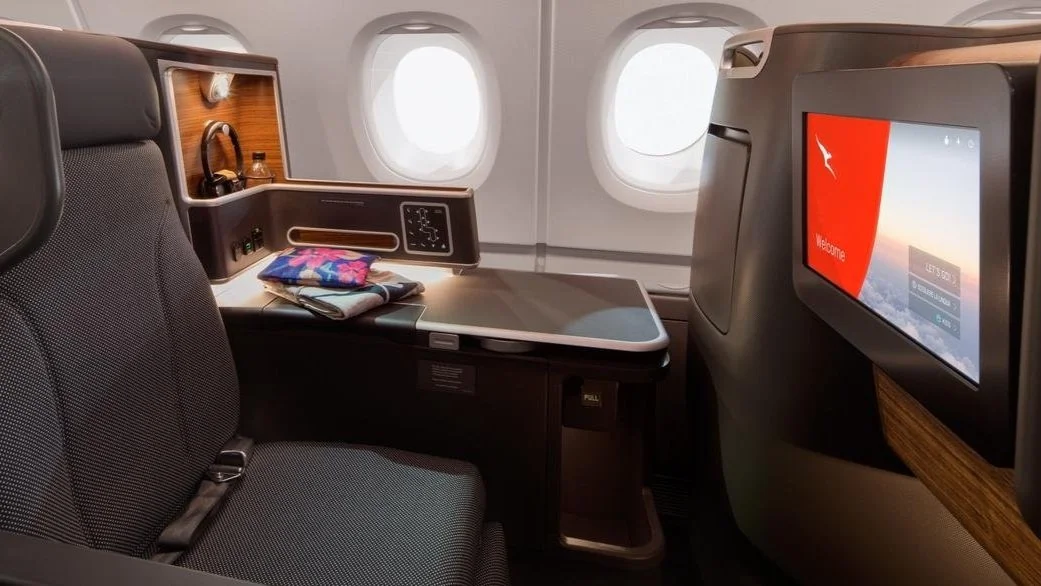Qantas Classic Flight Rewards Chart 2025: What These Changes Really Mean(A Traveller’s Perspective)
Qantas Business Class
Let’s start with a simple truth: points are like a currency, and just like dollars, they’re not immune to inflation. In fact, over the past 5–6 years, the cost of living has risen significantly across the board. If you’ve been in the points game for a while, you’ve probably noticed that the more you spend, the more points you can collect thanks to bonus offers, promotions, and more lucrative earning opportunities.
And that’s precisely why airlines need to increase redemption rates occasionally, if they didn’t, points would become too easy to earn and the system would break down. Seats would be snapped up faster, availability would plummet, and the value of your points would erode due to sheer competition.
These changes might sting a little now, but they help preserve the long-term value of the program.
If you’ve been saving your Qantas Points for that dream redemption, you might have noticed some changes coming into effect from 5 August 2025. Qantas has officially updated its Classic Flight Reward table, and yes, points costs are going up. But let’s cut through the noise and take a practical look at what this really means for travellers like you and me.
So, how bad is it really?
Let’s be honest: the headlines sound scary, "points increases", "business class hikes", "more expensive redemptions." But here’s the reality:
The maximum increase across the board is around 20%, with most Economy rewards seeing ~15% rises.
These are relatively modest increases compared to other global loyalty program devaluations.
There are a number of sweet spots, especially for Economy and short-haul Business.
What’s the true impact on travellers?
This update doesn’t make your points worthless. But it does highlight the importance of:
✔ Booking early
✔ Understanding value per point (especially in Business & First)
✔ Considering partner airline redemptions or other frequent flyer programs you have points with (which could offer better value)
A 20% increase in Business Class might sound high, but if you’re flying Qantas A330 to Asia or A380 to the US or UK, it’s still a great way to travel luxuriously for a fraction of the cash price.
Zones and Cabin Class Changes – In Context
Instead of listing every number again, I’ll point you straight to the official tables for full breakdowns: View the official Qantas Classic Rewards table
But here are my takeaways:
Short-haul Economy (Zones 1–3) remain good value for weekend getaways and domestic hops.
Mid-haul Business Class (Zones 4–6) see increases but still offer a great comfort-to-points ratio.
Long-haul First Class (Zones 7–10) is now more expensive, but still a bucket-list worthy redemption if you know how to optimise.
Real Examples That Still Shine
SYD - Singapore Business Class: 82,100 pts (was 68,400) - that’s a +20% rise, but still exceptional for a 7+ hour flight in lie-flat luxury.
SYD - Melbourne Business Class: 19,300 pts (was 18,400) - only a small increase for a premium seat and lounge access.
SYD - New York First Class (via partner): Yes, it’ll cost you, but using flexible points from credit card programs can still make this dream trip happen.
How Does Qantas Compare to Velocity Frequent Flyer in 2025?
If you’re wondering whether it’s time to diversify your loyalty strategy, here’s a quick comparison of typical reward redemptions on Qantas vs Velocity:
Qantas VS Velocity Example New Reward Chart Comparison
Takeaway: Velocity offers lower points cost on many premium redemptions, particularly long-haul. Qantas may have a stronger partner network and broader availability, but they also have many more members compared to Velocity.
Final Thoughts: Adapt, Don’t Panic
One more important strategy? Don’t keep all your eggs in one frequent flyer basket.
If you’ve been all-in on Qantas, now’s the time to consider diversifying your points portfolio. Velocity Frequent Flyer is a solid alternative - and with Velocity Points transferable to Singapore Airlines KrisFlyer, you gain access to a whole world of premium redemption options.
Also, consider flexible credit card programs like American Express Membership Rewards or Westpac Altitude Rewards, which allow you to transfer points to multiple airline programs depending on your travel goals. Diversification is your best defence against future devaluations and maximises your options when reward seat availability gets tight. Points programs will always evolve. The key is not to hoard points - earn and burn wisely. These updates are not the end of the world. But they are a reminder to:
Stay up to date
Use your points sooner rather than later
Think strategically with your redemptions
We would love to hear your thoughts - how do these rate increases affect your points strategy? Drop a comment below and share your plans or tips with the community!
If you've found this guide helpful and want to support our mission to make 'Travelling with Points' more accessible to everyone, consider making a contribution here - every bit helps us continue creating free, practical content for Aussie travellers like you.
Ready to book flights using your Qantas points before the rates increase? Check out our Points World Support Services - from 1:1 strategy sessions to custom redemption support, we're here to help you maximise every point you earn.


